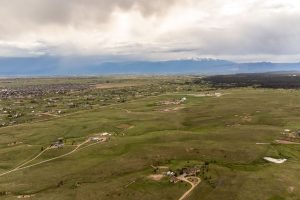The science of firewood
By Terry Stokka
The science of firewood may sound as simple as lighting a match to a pile of wood, but there are facts and myths that make it necessary to be more educated. See how much you know about firewood in this article.
How much wood is in a cord? Many firewood buyers are cheated in the amount of wood they get. It certainly is hard to judge how much wood is in a pile dumped in your driveway. A cord of wood is neatly stacked and measures 4-feet wide, 4-feet high, and 8-feet long. A half-cord is called a “rick” and is 4 x 4 x 4 feet. A full-sized pickup with a heaped, neatly stacked load can carry two-thirds cord but not nearly a full cord. A smaller pickup can carry only about one-third of a cord. A “face cord” is a stacked pile of wood that has a 4-foot-by-8 foot “face” but there is no standard definition of the depth of the pile so it is a poor measurement of wood.
Why not just get firewood at a convenience store? Even if you like the convenience of small bundles of firewood, consider this. A bundle of pine sells for about $7. Projected out to a full cord, that wood would cost you about $1190 for a full cord. Buying Ponderosa Pine in bulk from an individual at $300 per cord sounds better all the time, doesn’t it?
What about bugs in firewood? For firewood that is split, dried and seasoned, the beetles are gone. They either flew to another tree or died after the wood was split and dried.
Green or seasoned wood? Some firewood dealers sell wood that has not seasoned long enough. Green wood will be hard to light, will smoke a lot and will not provide much heat because the heat is absorbed in evaporating the water from the wood. Green, freshly split pine will season (dry) in about six weeks in the summer and about three to four months in the winter. Two pieces of dry pine will sound hollow (like two bowling pins) when you strike them together. Wet pieces will be much heavier and will make a “thud” when you strike them.
Aren’t hardwoods better to burn? All things being equal, hardwoods are better to burn because they provide more heat per pound and burn cleaner. Having said that, be careful what you buy because the “hardwood” you are getting may be not much better than pine. In Colorado, pine is plentiful and is the least expensive wood. Pine burns faster than hardwoods but still provides lots of heat. Wood that is called “hardwood” in Colorado Springs is often elm and cottonwood because they are a common type of tree cut down by tree companies and sold as firewood. Oak is one of the best known hardwoods but is several times as expensive as pine because it is trucked in from Kansas and Missouri. One pound of almost any wood provides the same amount of heat but oak is more dense than pine and burns longer. As a comparison, oak provides 27 million BTU/cord. Don’t worry about understanding BTUs but just look at the relative difference in the heating value: oak – 27 million; elm – 20 million; pine – 19 million; cottonwood – 16 million; aspen – 15 million. As you can see, oak is the best in heat available from a cord of wood, but that cord of wood is very expensive, often costing over $600. Elm and cottonwood take much longer to season, produce more smoke and the smoke smells terrible. Pine seasons quickly and burns with a fragrant odor.
Wood storage: Leave your wood uncovered in the winter to let it continue to season. Cover it if the forecast calls for a lot of snow. Keep a small amount of wood in a corner of the garage that is dry and ready to burn.
The bottom line is that given the cost and availability, I believe pine is the best wood to burn in Colorado.
With these facts in mind, try to buy firewood that is neatly stacked so you can measure how much you are getting, try not to settle for wood like elm or cottonwood and buy a cord or a half at a time. Next month, we will look at the science of wood stoves.




